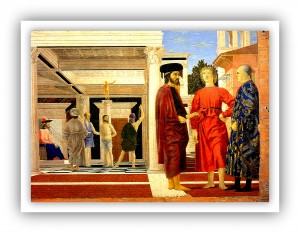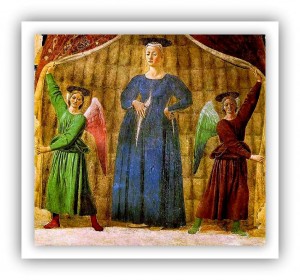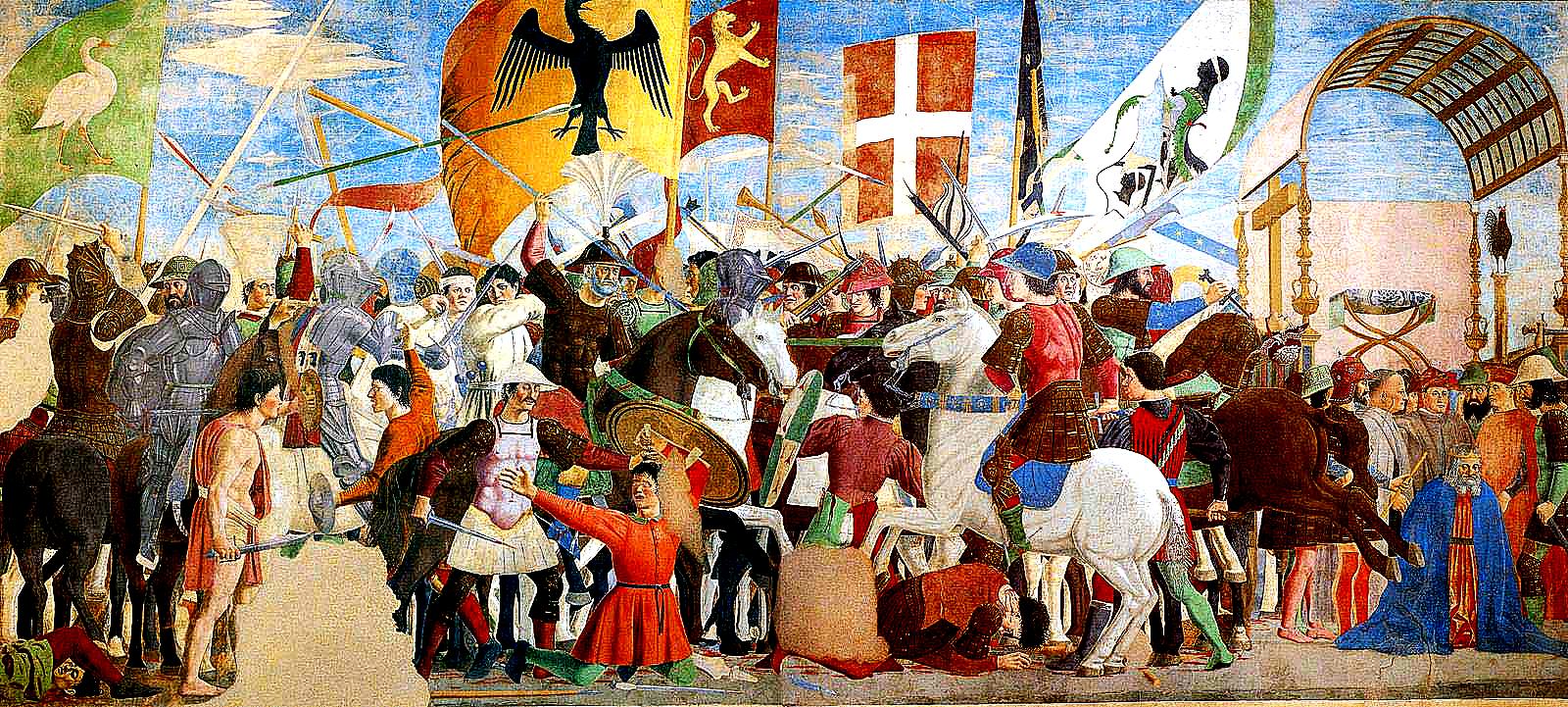


 PIERO DELLA FRANCESCA 1/4 – Of the man (which is certainly not the year of birth), born in the small Italian town of Sansepolcro, and died in the year in which America was discovered, we know relatively little. He began to paint banners and flags for his city, but also altarpieces, portraits and murals (partially lost). Professionally, he grew up in Florence, next to Masaccio and Domenico Veneziano. You have to imagine to see them between art and geometry, you have to imagine the value of philosophical choices and those concerning the topicality of his time.
PIERO DELLA FRANCESCA 1/4 – Of the man (which is certainly not the year of birth), born in the small Italian town of Sansepolcro, and died in the year in which America was discovered, we know relatively little. He began to paint banners and flags for his city, but also altarpieces, portraits and murals (partially lost). Professionally, he grew up in Florence, next to Masaccio and Domenico Veneziano. You have to imagine to see them between art and geometry, you have to imagine the value of philosophical choices and those concerning the topicality of his time. 


 PIERO DELLA FRANCESCA 2/4 – Speaking of the Italian Renaissance, imagine a man who managed to harmonize in his paintings the values (intellectual and spiritual) of his time. Finally, imagine, now, that many influences of his creativity have crossed the centuries, have won the confrontation between tradition and modernity, have made humanism a rationality that can combine with the art. Good. What you have imagined is real, and even has a name: Piero della Francesca.
PIERO DELLA FRANCESCA 2/4 – Speaking of the Italian Renaissance, imagine a man who managed to harmonize in his paintings the values (intellectual and spiritual) of his time. Finally, imagine, now, that many influences of his creativity have crossed the centuries, have won the confrontation between tradition and modernity, have made humanism a rationality that can combine with the art. Good. What you have imagined is real, and even has a name: Piero della Francesca. 


 PIERO DELLA FRANCESCA 3/4 – His artistic epic – apparently dormant – beamed Brunelleschi and Masaccio, Fra Angelico and Domenico Veneziano. What you see in the minuteness representative of the Flemish, born with Piero, along with the geometry of the compositions and the immobility of the characters. Its activity combines the pictorial practice with math, creating for the first time the perspective rigor and the expressive use of light.
PIERO DELLA FRANCESCA 3/4 – His artistic epic – apparently dormant – beamed Brunelleschi and Masaccio, Fra Angelico and Domenico Veneziano. What you see in the minuteness representative of the Flemish, born with Piero, along with the geometry of the compositions and the immobility of the characters. Its activity combines the pictorial practice with math, creating for the first time the perspective rigor and the expressive use of light. 


 PIERO DELLA FRANCESCA 4/4 – Piero della Francesca has traveled a lot, knowing princely courts, pictorial current Flemish and the use of oil painting. Urbino and Ferrara, Bologna, Ancona and Rimini, but also Perugia, Arezzo and Rome. Each city keeps the memory of what he has created, in a museum or a church, because of the man who died blind, nothing may be forgotten. Visiting Italy, go to Piero’s house. He is waiting for you in Sansepolcro Badia. You can see more on Meeting Benches, looking for: PIERO DELLA FRANCESCA (1416/1492), ITALIAN PAINTER – A myth, through the centuries, and: WHEN THE CHARM HAS NO WORDS – Investigation of a myth. Piero della Francesca
PIERO DELLA FRANCESCA 4/4 – Piero della Francesca has traveled a lot, knowing princely courts, pictorial current Flemish and the use of oil painting. Urbino and Ferrara, Bologna, Ancona and Rimini, but also Perugia, Arezzo and Rome. Each city keeps the memory of what he has created, in a museum or a church, because of the man who died blind, nothing may be forgotten. Visiting Italy, go to Piero’s house. He is waiting for you in Sansepolcro Badia. You can see more on Meeting Benches, looking for: PIERO DELLA FRANCESCA (1416/1492), ITALIAN PAINTER – A myth, through the centuries, and: WHEN THE CHARM HAS NO WORDS – Investigation of a myth. Piero della Francesca









